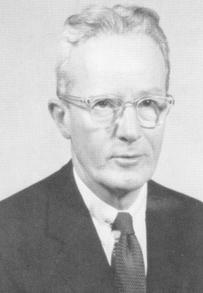February 19, 2002
Dr. Snyder was a pre-eminent Professor of Population and Public Health, Emeritus, Harvard School of Public Health where he had served as its Dean from 1954 to 1971. He was my friend and mentor. A spirited yet soft-spoken giant of a man, I came to know him because of his vast experience regarding the ability of lice to transmit disease and because of our mutual interest in the life and work of the late Dr. Hans Zinsser.
Upon diagnosis of his own terminal illness, Dr. Zinsser, with access to scientists around the world, chose John Snyder as the one he wanted to continue his laboratory work on typhus. As Dr. Snyder once wrote in a letter to me, “Dr. Z asked me if I would give up my Harvard Fellowship in order to work for the Rockefeller Foundation and learn as much as possible about rickettsia and typhus from him. He sent me away, telling me to think hard about the offer, and report to him a week later. I accepted the opportunity February 6, 1940.”
Dr. Snyder told me that Dr. Z took him under his wing, urged him to study all of his reprints and books about typhus, sent him to the library to get items that he had heard about but had not himself seen, and allowed him to read his correspondence with Charles Nicolle. Dr. Snyder embraced all these opportunities and became ranked among his peers as one of the top rickettsiologists in the world.
Looking through notes taken during our telephone visits, I am reminded of the occasions when I sought his wisdom during especially challenging times, one of which was when industry was allowed to compromise the NPA’s independent study on permethrin. I was personally accused of wrongdoing for informing the public that the results of the studies showed lice resistance. “Remind them,” he said, “that you have no contract of silence with anyone, that your contract is with the children and the obligation to do everything to protect them. And then tell them that you are advised by a man who has had more lice feed on him than any other scientist alive!”
He was unquestionably one of the finest human beings on the planet and spent a total of 91 years blessing those who came to know him. He encouraged our efforts here at the NPA with unwavering enthusiasm. He would say: “Keep doing what you are doing and keep me informed of your progress!”
He will be dearly missed.
Deborah Z. Altschuler
NPA President
February 20, 2002

1910 – 2002
During and after World War II, Jack Snyder ranked among the top rickettsiologists in the world. As a member of the U.S.A. Typhus Fever Commission, he made distinguished contributions, and he was a senior member of the small team that arrested the epidemic of louse-borne typhus in Naples, Italy. He did the pioneering work that showed that control of the Madrid strain of epidemic typhus (Strain E) is crucial if this dread disease is to be controlled.
Soon after the war, Jack was appointed to the position of Dean of the Harvard School of Public Health and Hygiene, during which time he also chaired the Commission on Rickettsial Diseases of the AFEB and served as a member of the Board. The public health menace of the rickettsioses diminished with the passage of time, and a portion of the credit for this advance is due to Jack Snyder.
The Armed Forces Epidemiological Board
The First Fifty Years 1940 – 1990
Office of the Surgeon General

